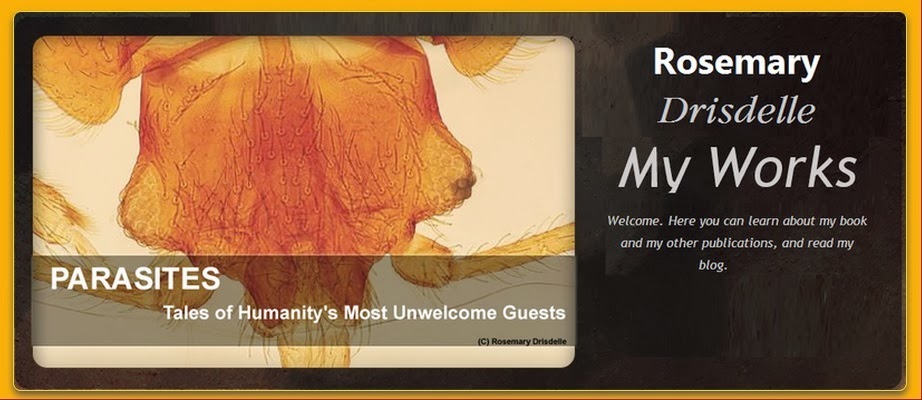 |
| Is this the face of a killer? This slug, Arion rufus, has been shown to carry Angiostrongylus vasorum larvae. Image by Guillaume Brocker; CC BY-SA 3.0. |
The roundworm Angiostrongylus vasorum goes by many common names: canine lungworm, canine heartworm, French heartworm – all descriptive labels acknowledging the fact that the adult worms reside in the heart and pulmonary artery (the blood vessel that carries blood from the heart to the lungs) of domestic dogs and wild canine species.
Life Cycle of Angiostrongylus vasorum
The life cycle of A. vasorum is complex:
- Adult worms produce eggs that are carried to the lungs by the blood circulation.
- The eggs hatch in the lungs, releasing larvae, which break through into the air space of the lungs, travel up the airways to the throat and are swallowed.
- Passing through the intestine, larvae are deposited in the environment with feces.
- Slugs and snails feeding on dog feces either ingest the larvae or the larvae penetrate the mollusk’s foot and undergo further development in the mollusk’s tissues.
- Infective larvae are released in the slime secretions left behind by snails and slugs, or are ingested with the mollusk when it is eaten by something (frogs, dogs, etc.)
- It is thought that dogs swallow the larvae and become infected when they eat snails and slugs, when they eat frogs or other animals that have eaten infected snails and slugs, or when they eat or lick things that are contaminated by slug or snail slime.
- Larvae migrate to lymph nodes, where they develop further, and then move to the heart and pulmonary artery.
Dogs Eat Snails and Slugs
Dogs eat slugs and snails, and frogs. While many dog owners will readily agree with this statement, it leaves others, like me, scratching our heads.
Would my dog eat a slug or snail? She has never shown the slightest interest in doing so (and there are lots where we live).
Would she eat a frog? Sniff it maybe. Play with it maybe. Step on it by accident; yes, I’ve seen this. Eat it? No.
Would she eat a food item left lying on the ground and possibly crawled over by slugs and snails (or with slugs and snails still on its surface)? Definitely.
And that is one of the reasons why I was particularly interested in this video of the movements of snails in a British garden at night.
I had no idea they traveled so far and so fast.
Risk of Angiostrongylus vasorum Infection
A lot is still unclear about A. vasorum. We don’t know what the most common route of infection is: snails, slugs, slime, frogs etc. We don’t know how many dogs have the parasite but exhibit no symptoms. We don’t know how many larvae a dog would need to ingest to become ill.
And of course, different species of slugs and snails are likely to differ in the distance they travel and the number of larvae they leave in their wake. Clearly, however, wherever A. vasorum occurs, all dog owners should take the threat seriously. As Eric Morgan et al write, the infection “is associated with coughing, dyspnoea [shortness of breath], exercise intolerance, weight loss, vomiting, abdominal pain, lumbar pain, neurological signs, heart failure, bleeding diathesis [tendency to bleed], and sudden death.”
Sources
Barcante, Thales Augusto, et al. "Angiostrongylus vasorum (Baillet, 1866) Kamensky, 1905: emergence of third-stage larvae from infected Biomphalaria glabrata snails." Parasitology Research 91.6 (2003): 471-475.
Fletcher, Damien. "Snails Can Travel at One Metre an Hour and Piggy-back on Others' Slime to Save Energy." Mirror News. Aug 23, 2013.
Morgan, Eric R., et al. "Angiostrongylus vasorum: a real heartbreaker." Trends in Parasitology 21.2 (2005): 49-51.

No comments:
Post a Comment